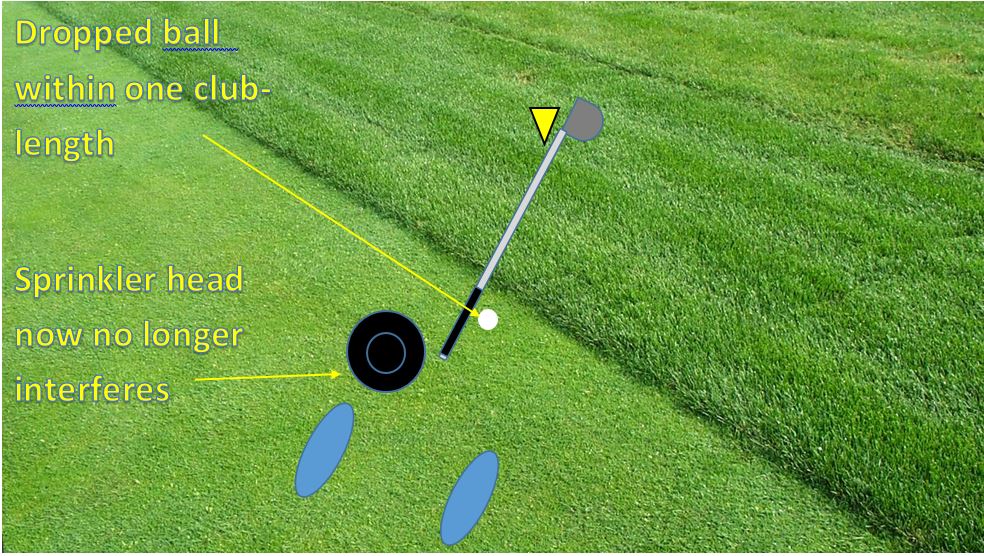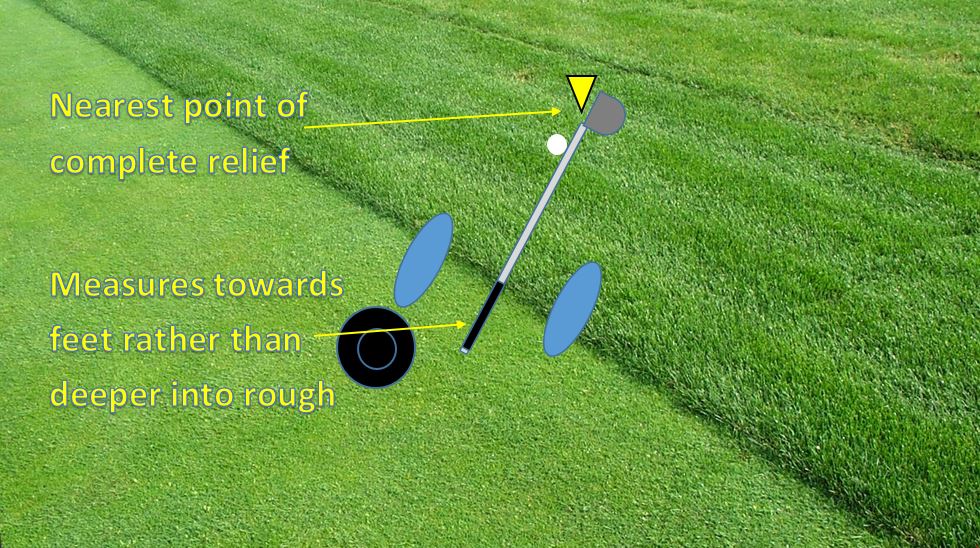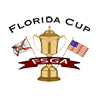Written by: Darin Green, Senior Director Rules & Competitions
Reliving real-life situations is a great way to learn the rules. Occasionally I hope you enjoy reading about some of the recent rulings that took place in FSGA competitions.
 Staked Tree
Staked Tree
A player pulled his tee shot far left of the fairway and bunkers. The ball landed on a steep hill near the edge of the club’s property. The ball rolled down the hill and came to rest in a horrible lie in a depression on the steep slope. A recently planted palm tree was near the ball. The palm tree had three angled wood supports keeping it upright.
The player surveyed his situation and quickly called for a Rules Official. The player explained to the Official that he would chip his ball sideways back into the fairway because of the palm tree and some bushes ahead; however, his club would likely strike the angled support. The Official read the Local Rules that morning and knew that there was no mention of wood supports. The angled supports were man-made; hence they were obstructions. The Official informed him he is entitled to free relief.
With assistance from the Official, the player found his nearest point of complete relief that was not nearer to the hole. The nearest point of complete relief was about one foot closer to the fairway, but still on the hill. The player then measured one club-length towards the fairway. The player dropped the ball within one club-length and the ball was in play. From this new position, the player had a clear view of the green and no longer had bushes in his way. He switched clubs from the one he was going to use for the chip-out and grabbed a club that would reach the green. Taking free relief from the obstruction probably saved him one or two strokes.
It is important to know the Local Rules in effect during your round because depending on what the Local Rules state, the tree supports could of had a different status. For instance, the Committee could have declared the angled supports to be integral objects, which would eliminate the free relief the player took.
Close of the Competition
A player returned her scorecard to the Committee and left the scoring area. Approximately ten minutes later, she returned to the scoring area concerned that a score on a hole was incorrect. The Committee pulled the player’s scorecard, showed it to the player and she informed the Committee that she signed for a score lower than she actually made on a hole. The Official informed her that signing for a score lower than she actually made on a hole results in a disqualification penalty.
Shortly after the Committee presented the trophies to the winners, the player re-approached the Committee and said she was incorrect earlier and the score on the scorecard was correct. The Head Official informed her that once the awards are presented the competition is “closed” in the eyes of the Rules of Golf and the results are final.
There are four times when the results may be modified after the close of the competition; however, all four refer to when a player can be disqualified after the close of the competition (Rule 20.2e).
Smart Player
A player’s tee shot came to rest about two feet off the fairway in some deep rough. The player took his stance and found his foot was on a sprinkler head. He then waived me over for help. He wanted me to observe his plan to take free relief to make sure everything was done properly. He found his nearest point of complete relief which was just a few inches farther into the rough which took his left foot off of the sprinkler head. He placed a tee in the ground. He then took his driver and measured back towards the sprinkler head and barely onto the fairway. He pointed to an area on the fairway within the one club-length and asked if he could drop there. I said yes because that point was within one club-length of his nearest point of relief, not nearer to the hole, and if the ball was at the spot he no longer had interference from the sprinkler head (the sprinkler head would be between his feet and the ball). He dropped the ball and it came to rest about four inches from the sprinkler head and within the relief area. The ball was in play and he played a nice shot onto the green.
(The player was a highly skilled amateur so there was no concern that a sprinkler head four inches to the side of his ball would interfere with his swing)
Below are diagrams of the relief process.








